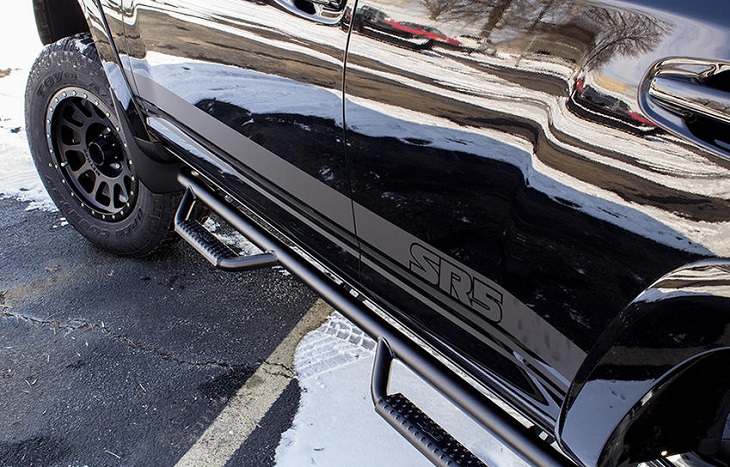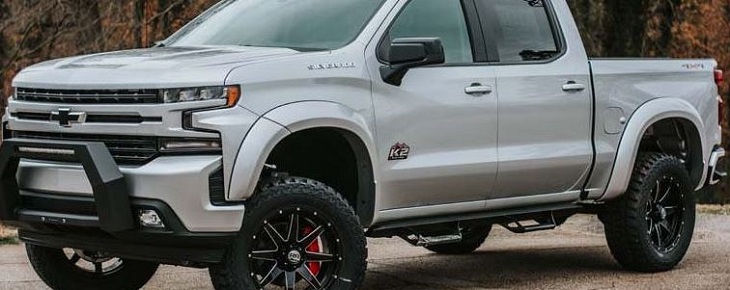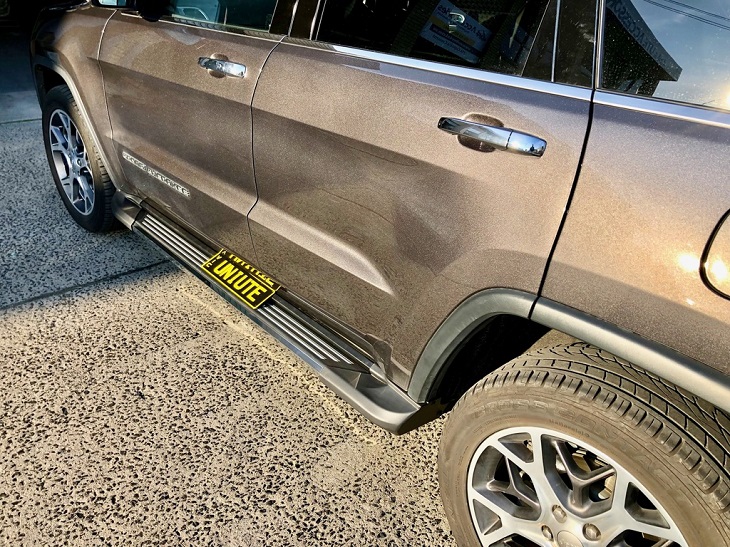Utes, SUVs and pure 4WD station wagons are being snapped up like never before. Buyers like versatility, go-anywhere capability, ruggedness, ample space and a higher driving position. They’ll also equip their rigs for their intended purpose. Tradies have heaps of choices when it comes to accessorising utes and vans for the worksite, and off-roading enthusiasts can dip into a range of extras when traversing some of Australia’s most far-fetched and alluring landscapes.
Often overlooked exterior additions are side steps and running boards. These more than just add aesthetic appeal to your vehicle, but serve multiple purposes. They make the somewhat high entry into vehicles of this type more accessible, and also help in protecting the sides when on rougher roads. They’re well-made metal offerings, cheap to buy, and easy to install. And they’ll serve their purpose well. Aftermarket running boards and side steps are offered for all major car brands and sold in most automotive stores.
Side Steps vs Running Boards – Similarities and Differences

Side steps and running boards share the same basic purpose – to provide drivers and passengers with an easier way in and out of the vehicle. They do this in slightly different ways, and this is reflected in their design and how they fit relative to the car. Side steps or side bars extend a little lower from the rocker panels to allow for more space and a more comfortable way of entering the vehicle. They have distinct and separate stepping platforms set below each door. The platforms protrude out so as to provide an adequate stepping area and are textured for better grip.
Running boards, on the other hand, sits flush with the panels, and don’t go as low as side steps. There are no visible gaps between the board and the rest of the car. This makes them the better choice for vehicles that don’t have high ground clearance. In addition, they’re more suitable when off-roading for the same reasons. In terms of design, aftermarket running boards take on a more rectangular shape with slight tapering at each end. Another obvious difference is the stepping area which extends along the whole length under the doors. From a purely aesthetic viewpoint, running boards give off a neater, more compact look streamlined with the rest of the vehicle.
Why have Side Steps or Running Boards?

Having sure footing is the basic purpose of both running boards and side steps. Running boards allow for some flexibility in this respect as more of the board has a grippy surface as compared to side steps. Besides getting in and out of vehicles easier, they also let you access other parts of the vehicle. Both can be used to comfortably load or arrange items on roof racks, and getting to the tub doesn’t require balancing on the rear wheel. So, safety and convenience are other features that both these additions have in common. Another is keeping things clean. If you drive your 4WD or ute like most owners, on roads that aren’t necessarily sealed, you be picking up dirt or mud by the bucketload. Both side steps and running boards allow cleaning any mud, grime or liquids off your shoes so you don’t spoil the interior. This has a lot to do with the design. Some aftermarket running boards have perforated crinkles to let water and mud seep through and not collect on the surface. Features like this help with corrosion, meaning the boards will last longer, not to mention look better.
Another overlooked use of running boards and side steps is the protection they provide. Having a set attached to both sides means that things like doors and front and rear side panels don’t come into contact with other vehicles or obstacles when in the bush. They come out a little wider than the rest of the bodywork so you won’t be getting any dents in the car park or scrape doors and side mirrors when brushing against trees. To help out in this respect, running boards are often matched with side brush bars that bolt to the front end and attach to slots in bull bars. Packaged combos of side steps or running boards and side brush bars will save you some cash compared to buying the items separately.
Materials and Build in Side Steps and Running Boards

Side steps and running boards come in durable stainless steel or aluminium. Both materials can be powder coated for better wear in rougher conditions. Some side steps can also include rubberised steps integrated into the tubing. Boards are designed in thicknesses of up to 10cm, so will easily handle any weight. All side steps and running boards sold in Australia comply with strict Australian Design Rules, so no worries whichever make you go for.
Fit and Installation
Matching brackets and bolts are sold with all running boards and side steps. These allow you to attach them to allocated slots in the chassis rails, so drilling isn’t required. Keep in mind that lengths might differ, as well as the location of mounting points, so get the running boards or side steps compatible with your vehicle.


















